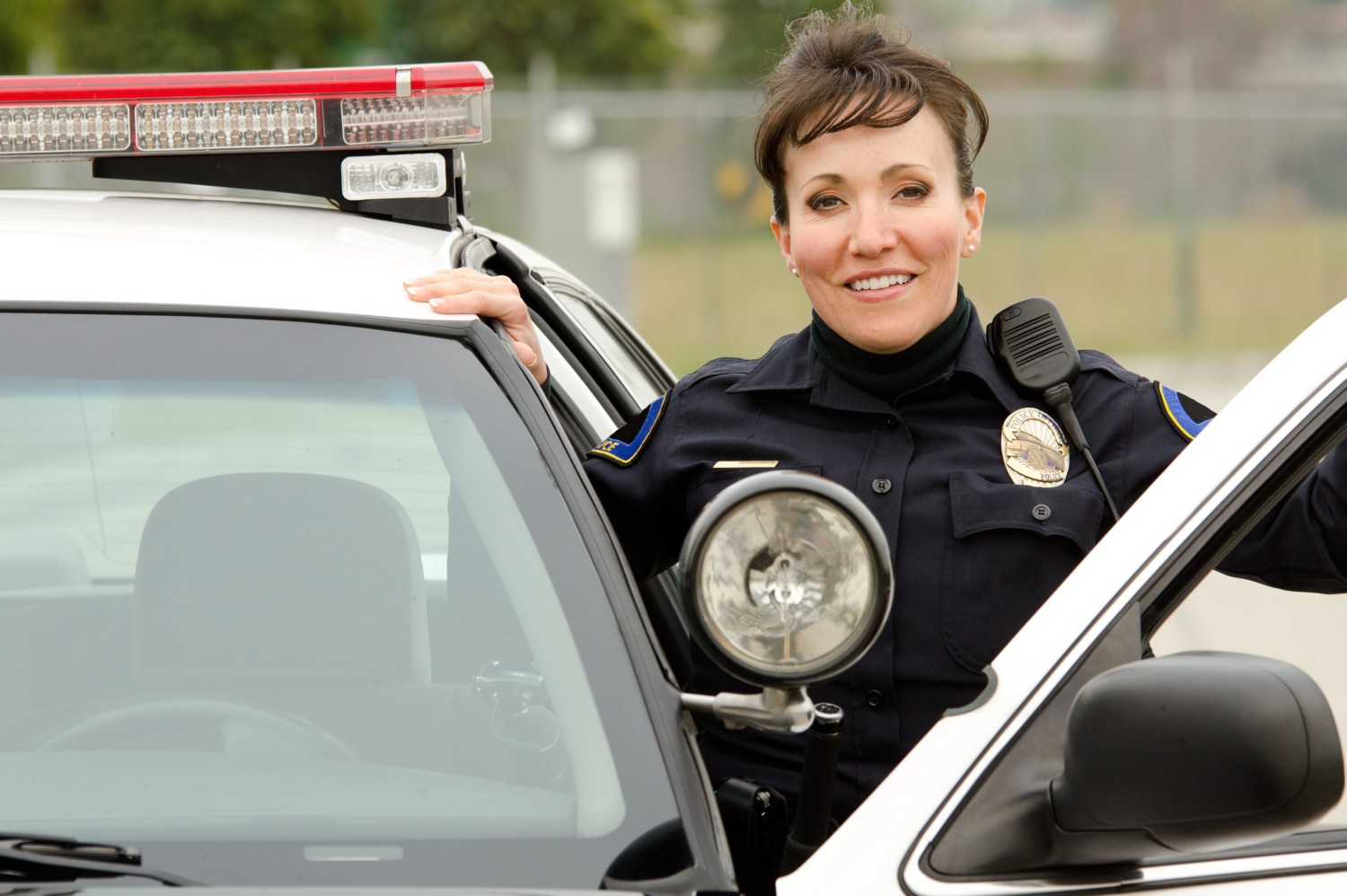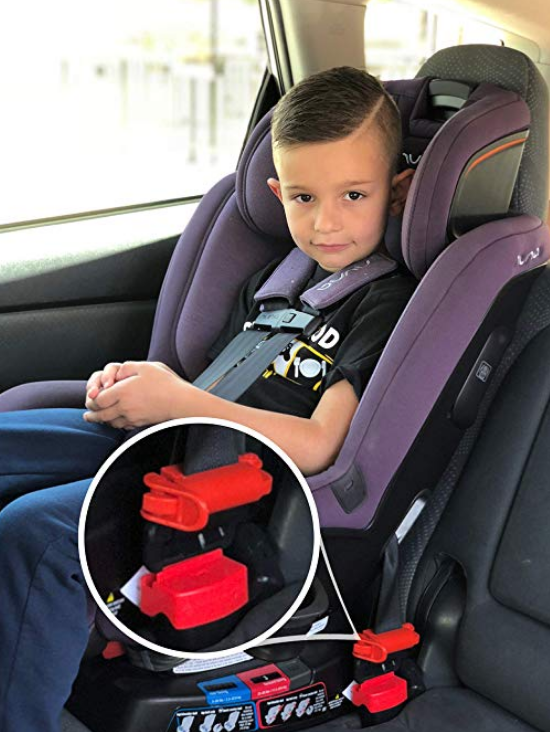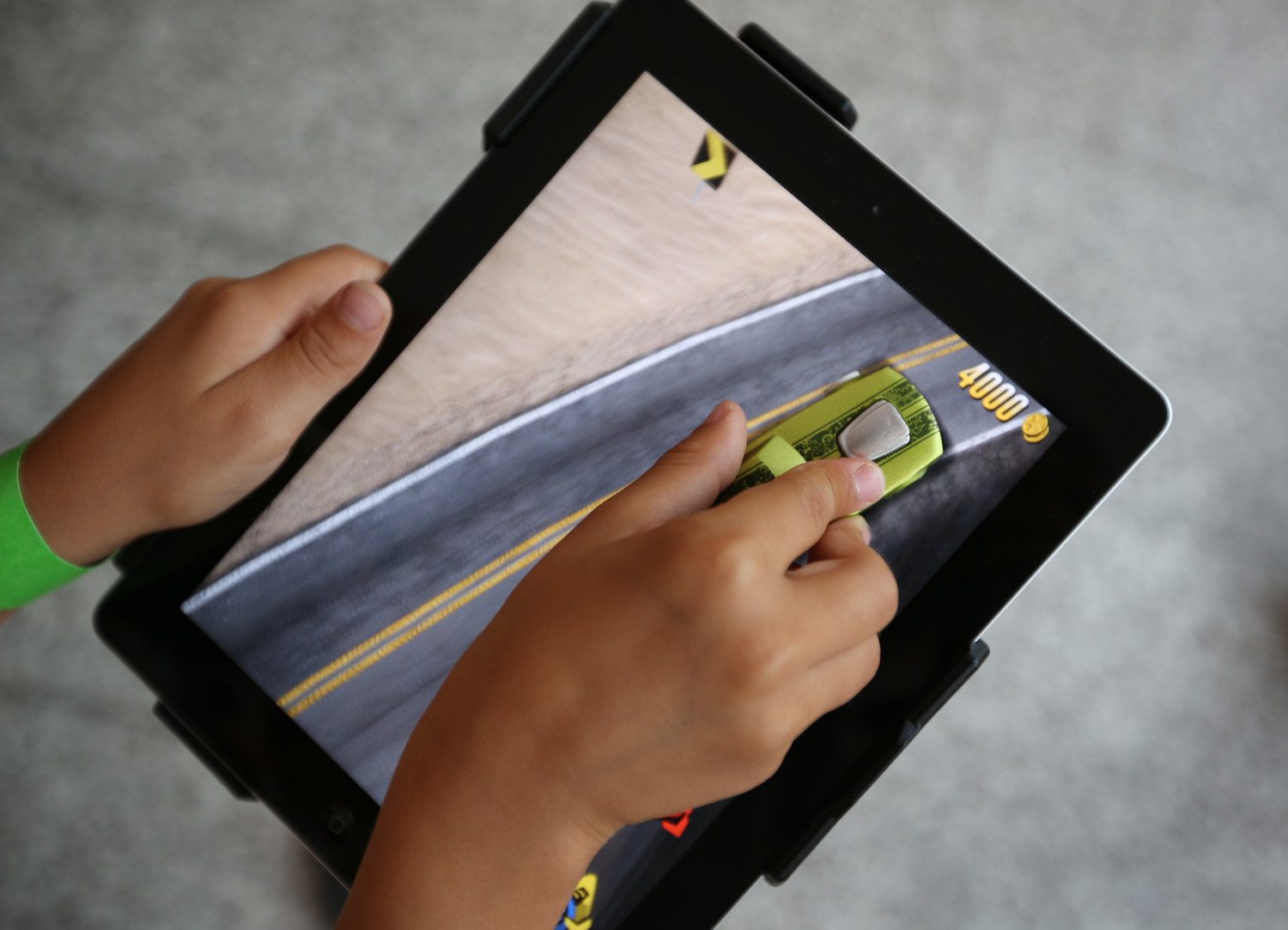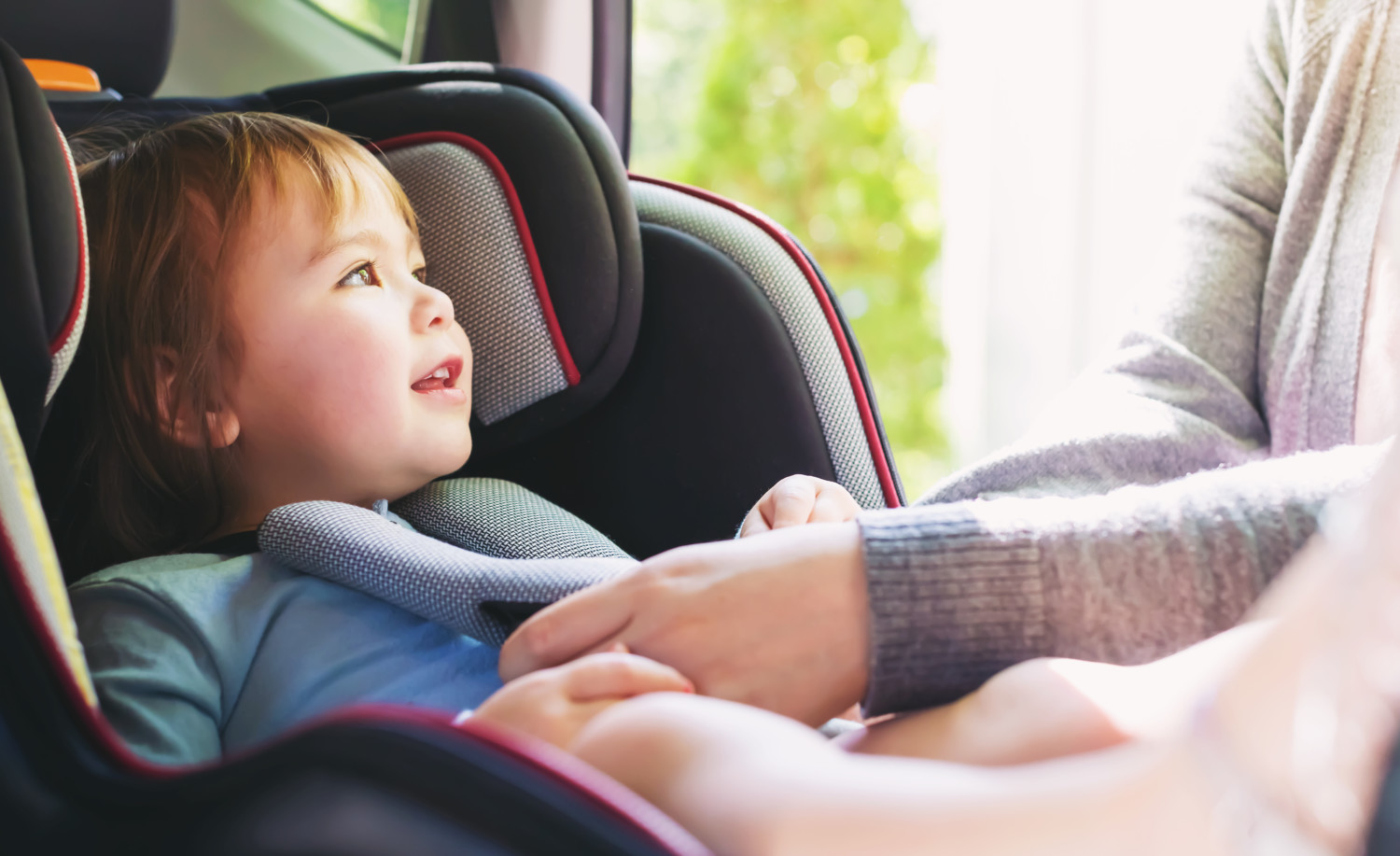The products and services mentioned below were selected independent of sales and advertising. However, Simplemost may receive a small commission from the purchase of any products or services through an affiliate link to the retailer's website.
Moms, you are not alone: We have all had experience with a strong-willed child who simply won’t obey the rules.
Some moms are struggling with children who often unbuckle their safety belts and won’t stay in their car seats, and that danger is a huge stress for them. It leads many to seek advice from parenting groups and other places when they’re at their wits’ end. Staying home with a two-year-old toddler is not often an option!
Yet, should a crash happen while your kid is out of position, the likelihood of injury is higher. Your child could be thrown forward and then backward.
This video, from YouTube user Julie REHABILITY, shows what happens to a crash test dummy in a car seat when shoulder straps are out of place:
But how do you keep your squirmy children safely secured while you’re driving? You can’t be watching them every second, since you also have to keep your eyes on the road. Can you button them and their seat belts into a shirt they can’t get out of? Cover the buckle’s release button with a blanket so they can’t reach it? Keep mittens on?
We’ve collected some options, in case you need them.

1. Have A Law Enforcement Official In Uniform Show The Child How To Buckle Up
It may help your kid to have a role model reinforce your instructions. If possible, you could try to re-visit the official a few weeks later as a reward for the child, if he or she accurately follows instructions. The law enforcement officer will likely be gentle but firm in the conversation. Also, sometimes the message is better received coming from a third party, even if a police officer is not an option for you.

2. Go Over Instructions In The Car Before Leaving
Repeat the steps to follow every time, saying things such as, “You will stay in your seat. You will remain buckled in. You will not have a snack if your safety belt gets removed.” Repetition will help the child remember and potentially feel the loss of a reward if the rules are not followed.
3. Have The Child See That Obedient Children Are Getting Rewarded
Monkey see, monkey do. Make a point of going somewhere fun — the zoo, the mall or an amusement park. Reward children who stay buckled up with a treat, such as ice cream. Remind the child who is unruly that he is missing out on that reward because he is not following instructions to keep that seat belt on. Be prepared to cancel outings if needed.
4. Purchase A Clip Kit
The Safety Buckle Pro Seatbelt Lock advertises that it makes it more difficult for a child to become unbuckled. There are multiple clips to cover the belt and belt lock, which will mean more work for the child. Other products are also designed to keep kids in their car seats, but make sure you understand the safety implications of using aftermarket products on your car seat.

The Safety Belt Pro is less than $11 on Amazon and qualifies for free shipping through Amazon Prime.
5. Provide Electronic Distractions
This one may be debated by parents who don’t want their kids to have a lot of screen time, but electronics could provide the distraction your wiggly children need. Offer them a tablet with learning games, or put on a movie. Hopefully, they will focus on the show or games and not on getting out of their car seat.

6. Even On Short Rides, Play Vacation Travel Games
Did you ever try to find a license plate from all 50 states on vehicles that passed your car on the highway? What about color games such as counting all green cars? My young niece likes to look for Jeeps — her daycare’s owner has one so she thinks it is a very cool car! Maybe you can have your child count churches you pass, how many red lights at which you stop, or look for drivers wearing sunglasses. Think of different things to search for on each car ride.
7. Make Sure Seatbelts Are Comfortable For Kids
Sometimes, children want to escape car seat restraints because they rub and chafe against their skin. In this case, simply covering seat belt straps with a softer material will help. For children with sensory issues, adding a different material can also help calm them. You may also wish to try a more comfortable car seat system; here are suggestions for the best ones.
8. Call On Santa Claus Or The Elf On The Shelf
We know this one feels a little smarmy. But hey, desperate times call for desperate measures, right? Remind children that their behavior throughout the year is watched by their favorite holiday figure who determines what gifts they may receive. Maybe the Elf on the Shelf can make a special summertime visit and appear right in the car! Or perhaps Santa can leave a note telling the child his or her safety belt must remain buckled at all times while in the car.

9. Tell Them A Scary Story About The Consequences Of Not Using The Seat Belt
Some parents have used this tactic to good effect, but we caution you to use it sparingly based on your children’s personalities. Tell them about the time someone you know was injured — perhaps they bumped their head on a window or spilled something because they shifted due to a lack of a safety belt in place.
10. Stop And Turn Off The Car
One mom says she will sometimes pull over, turn off the car, take out a book and begin to read. This causes the unbuckled child to grow impatient with not getting to the destination, and get back in the car seat and buckle up. For this tactic, build in extra time for your trip.
11. Keep Them Rear-Facing As Long As Possible
Follow guidelines for keeping children rear-facing as long as possible. KidsHealth.org says that recent studies show a child under age 2 is 75% less likely to die or become seriously injured in a rear-facing seat — and it may make finding those buckles a bit harder.

The National Highway Traffic Safety Administration says children should stay rear-facing as long as possible, until they outgrow their rear-facing car sears at around age 3.
Check out these recommendations for convertible car seats you can use through the various stages of your child’s life, including when they need to be rear-facing and forward-facing.
Just remember, though: you will get through all the challenges your children are throwing at you. In case you need to hear it: You’re doing great.
This story originally appeared on Simplemost. Checkout Simplemost for additional stories.


